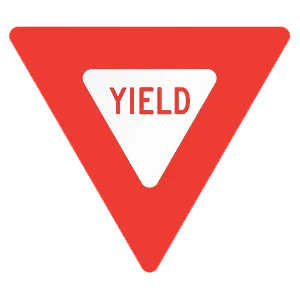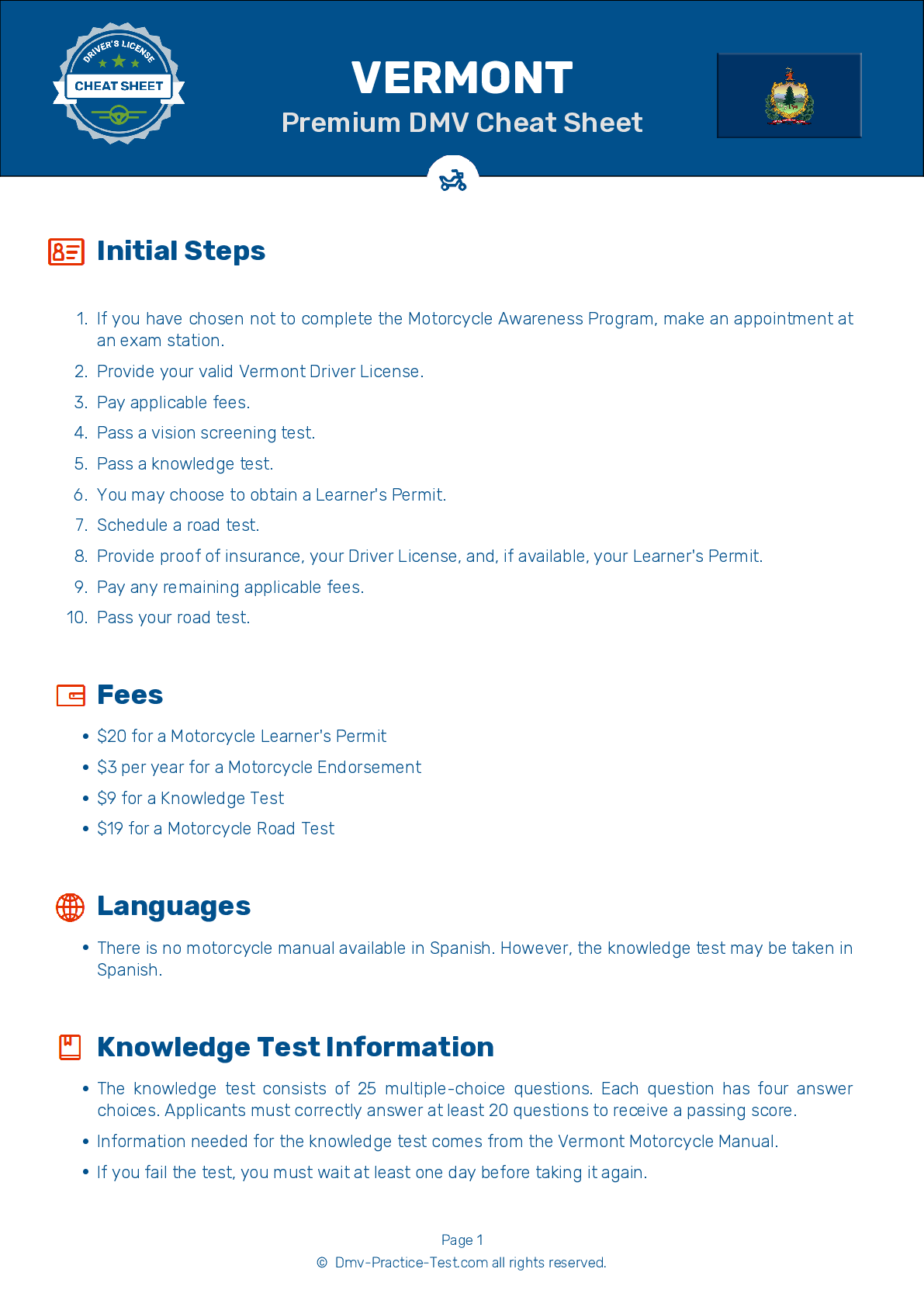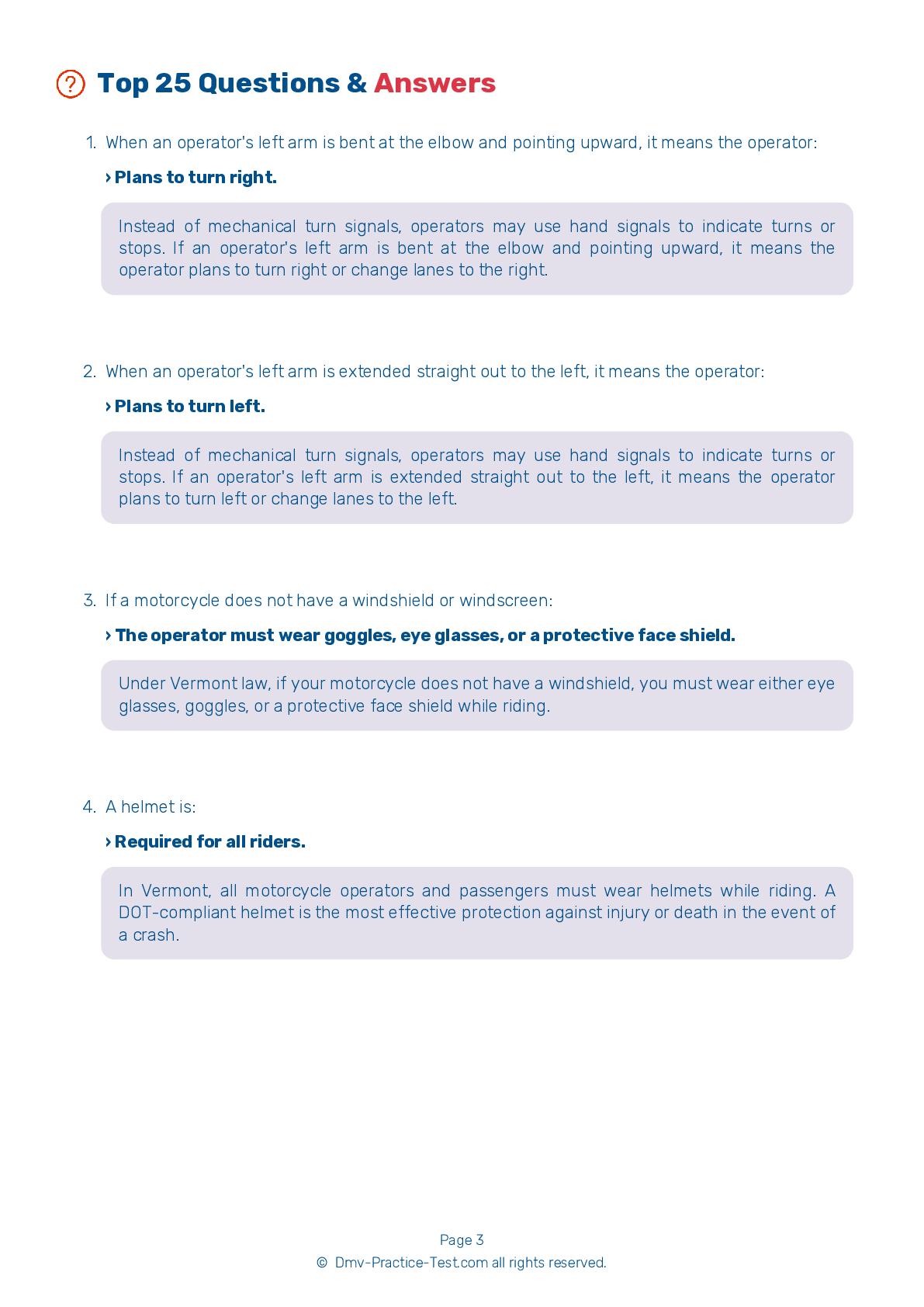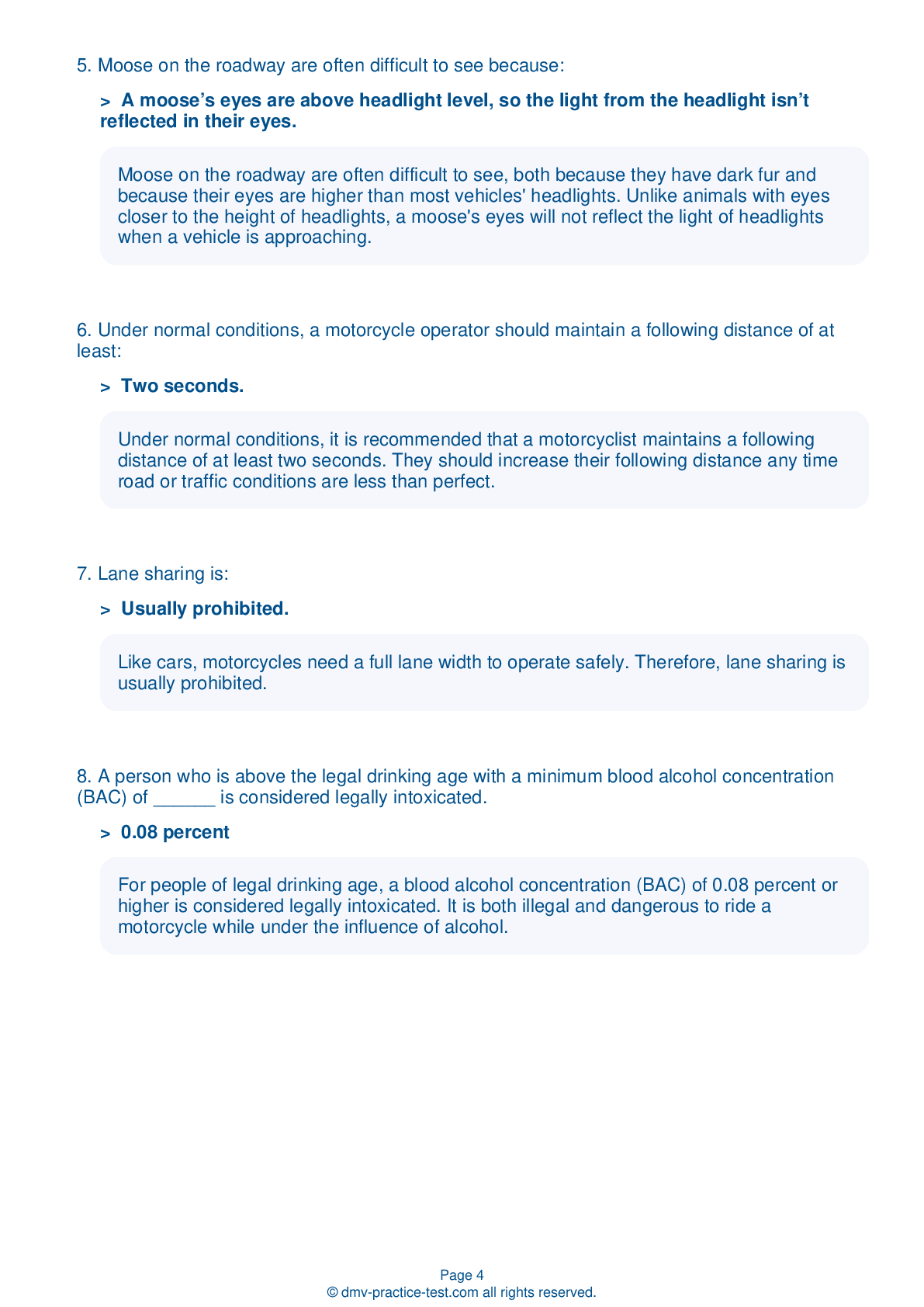Motorcycle Test | License VT 2025 | FREE Online Practice! #2
Take this FREE motorcycle test (license in VT 2025) to check your knowledge of the road rules. To improve your results, download a motorcycle handbook online, study theory, and practice for free on our website. Still worried about how to get a motorcycle license in Vermont in 2025? Check our website for more sample tests, train as much as possible, and boost your grades!
1 . A helmet is:
In Vermont, all motorcycle operators and passengers must wear helmets while riding. A DOT-compliant helmet is the most effective protection against injury or death in the event of a crash.
2 . If you are transporting a passenger, they should:
Passengers should lean as the operator leans. A passenger should sit as far forward as they can without crowding the operator and hold firmly onto the operator's waist, hips, or belt.
3 . When riding, the best sitting position:
When riding, you should be seated in a posture that allows you to use your arms to steer rather than to hold yourself up. You should not have to stretch to reach the handgrips and your arms should be slightly bent when holding them. You should keep your knees against the gas tank to maintain your balance.
4 . Riding directly alongside another vehicle is:
Riding directly alongside another vehicle is dangerous both because you may be in the vehicle's blind spot, and because the vehicle may block your route of escape from additional hazards.
5 . To effectively provide protection for a motorcycle rider, pants should:
For your protection, you should wear pants that cover your entire legs and are made of leather or another sturdy synthetic material. Clothing should fit snugly enough that it does not flap in the wind but not so snugly that it restricts your movement.
6 . This sign means:

Decrease your speed as you approach an intersection with a yield sign. Prepare to stop and yield the right-of-way to vehicles and pedestrians in the intersection or crossroad. You must come to a full stop at a yield sign if traffic conditions require it.
See the exact questions that will be on the 2025 Vermont DMV exam.
99.2% of people who use the cheat sheet pass the FIRST TIME
Jeneen was tired of paying $5/gallon. She got herself a scooter that required the motorcycle license. She studyed the motorcycle test cheat sheet and passed her test the next day!
Christopher tells us how he knew nothing prior to obtaining the motorcycle study guide, and he only got one question wrong because he clicked on the wrong answer by mistake.



